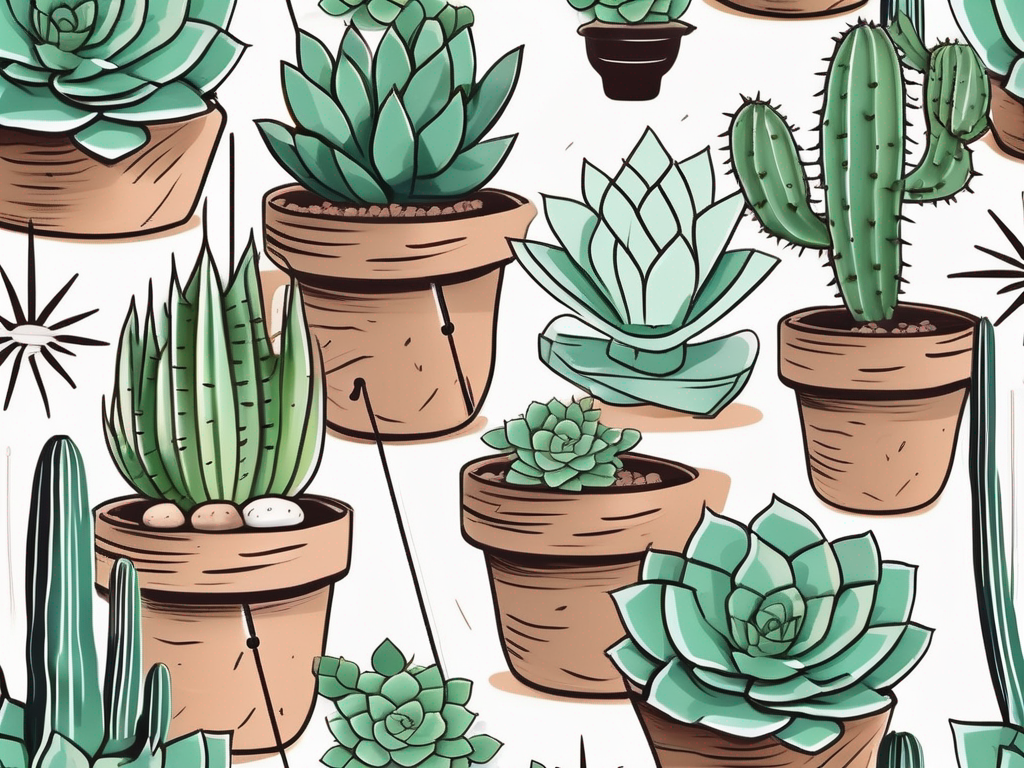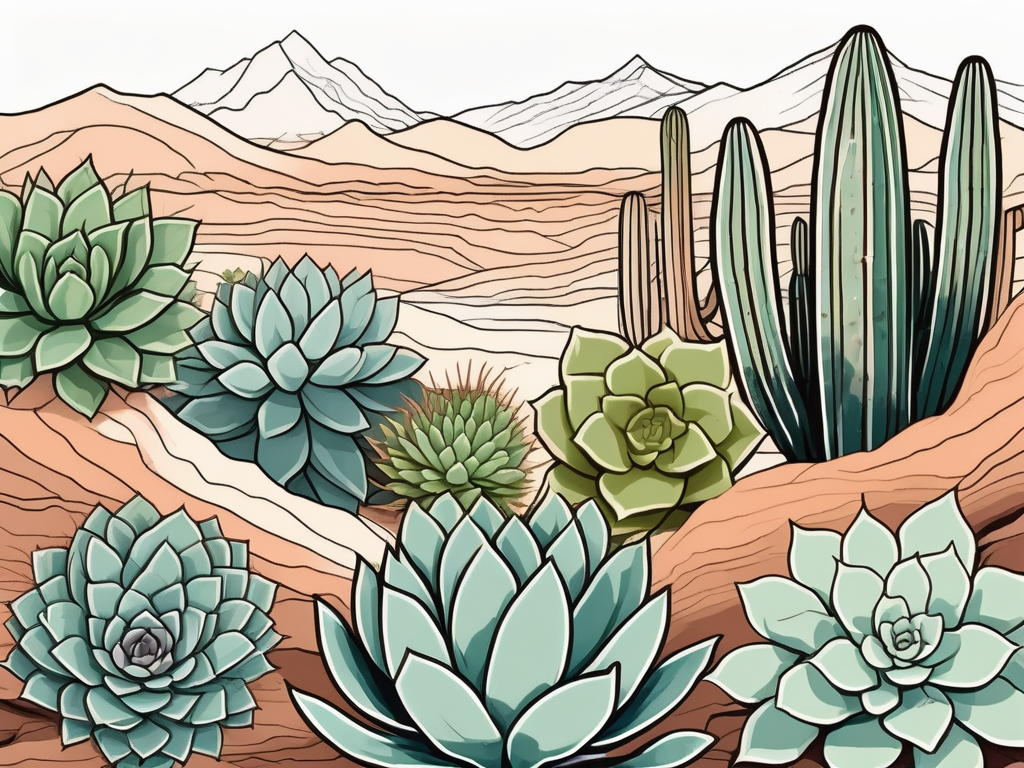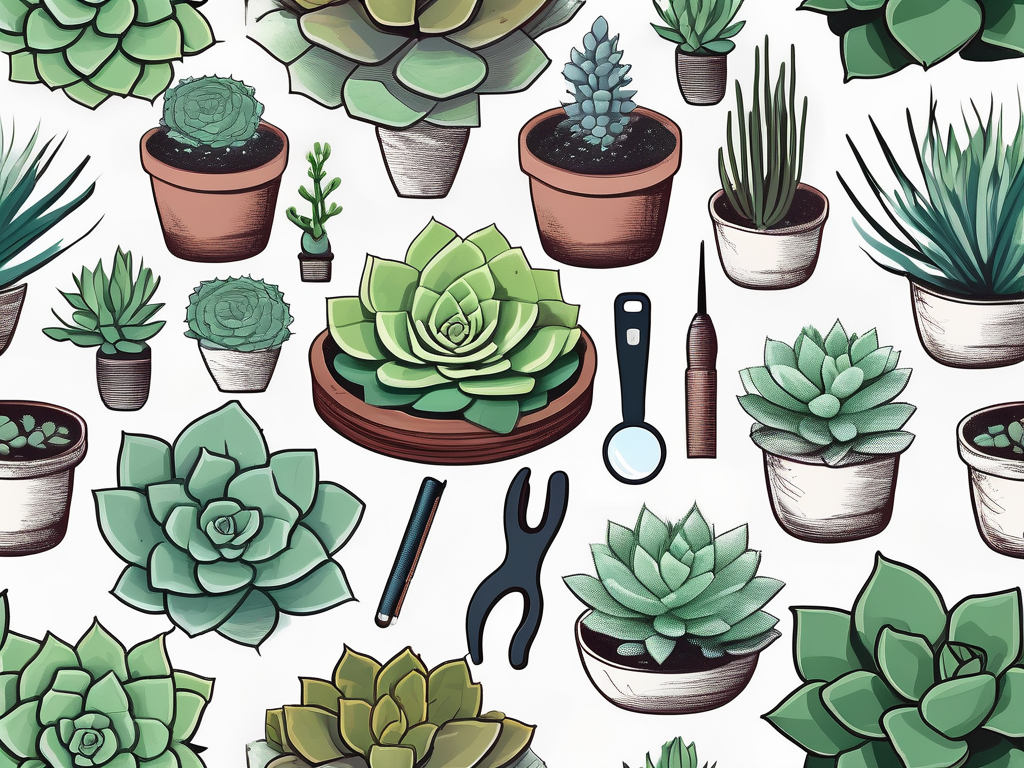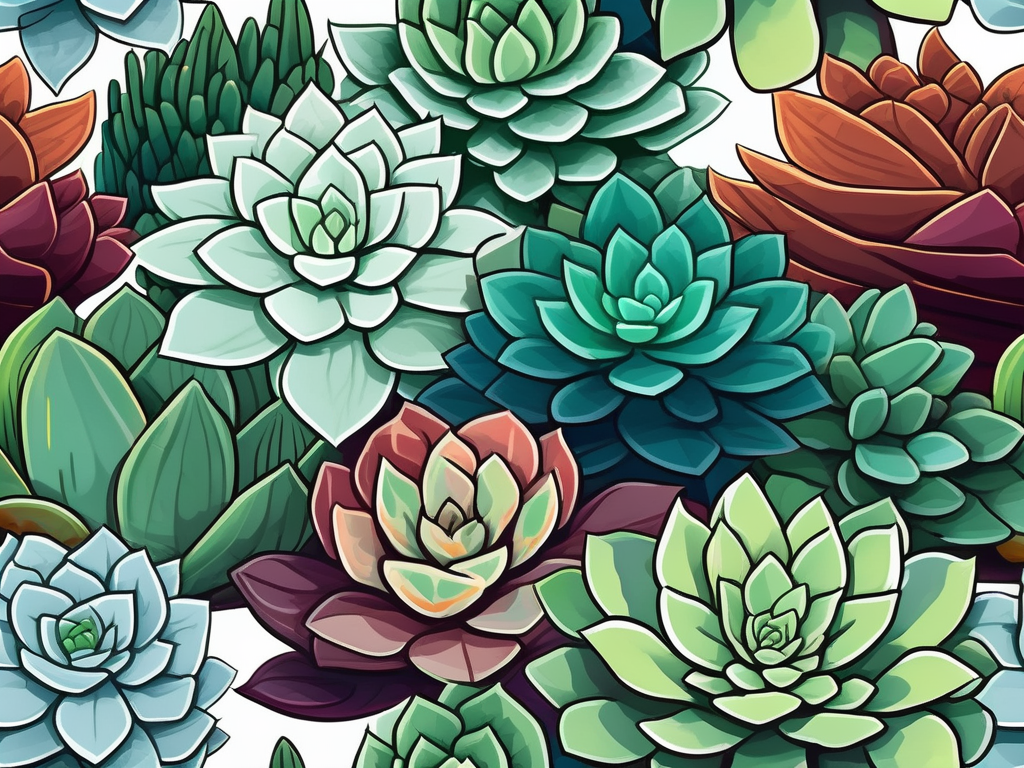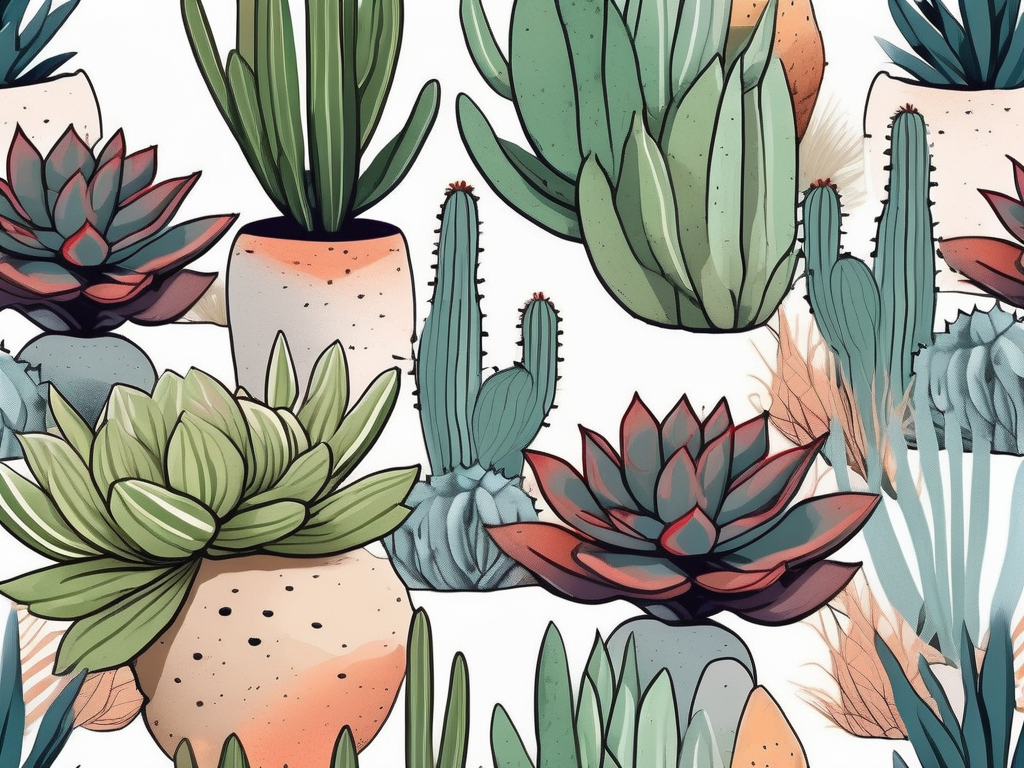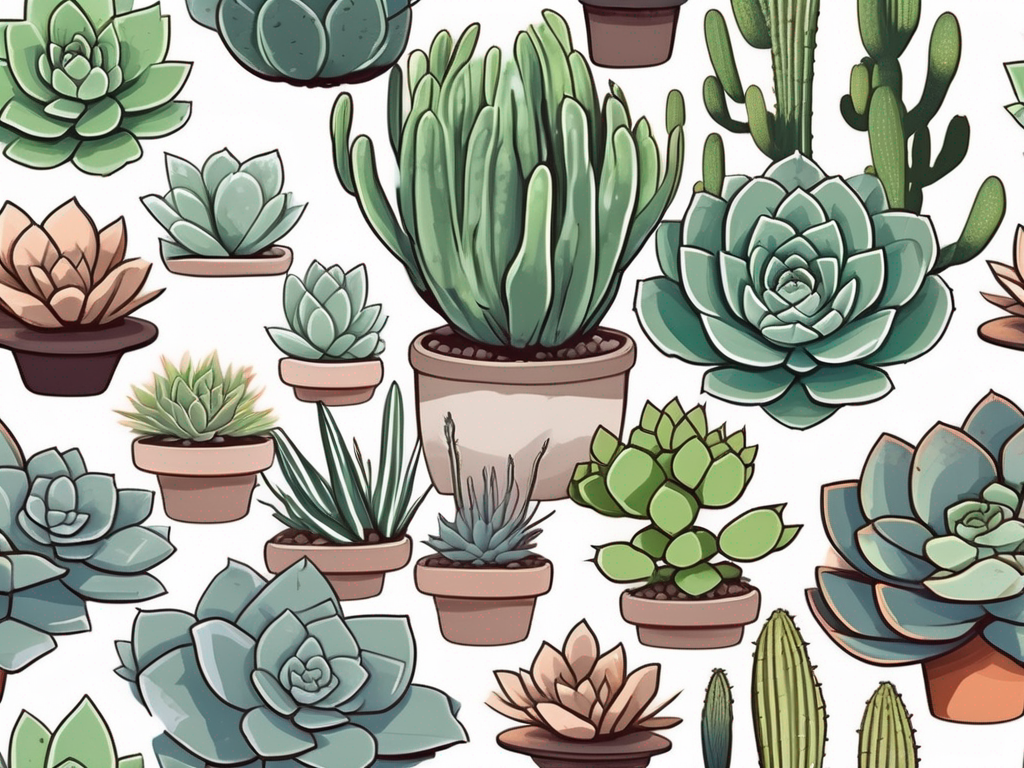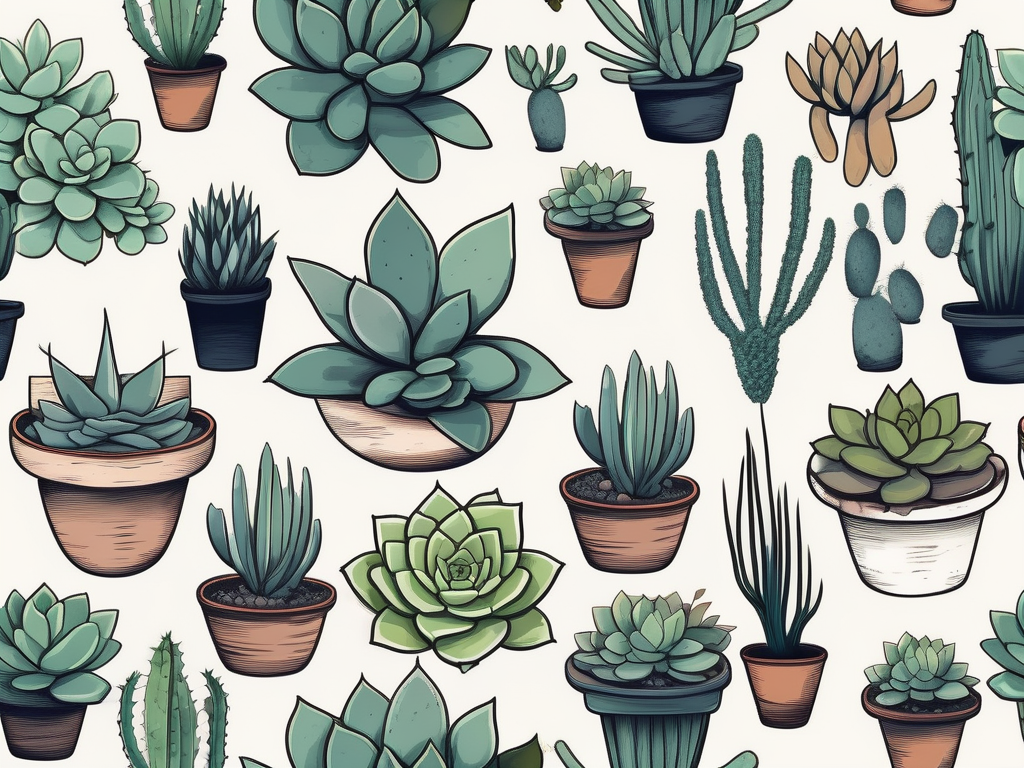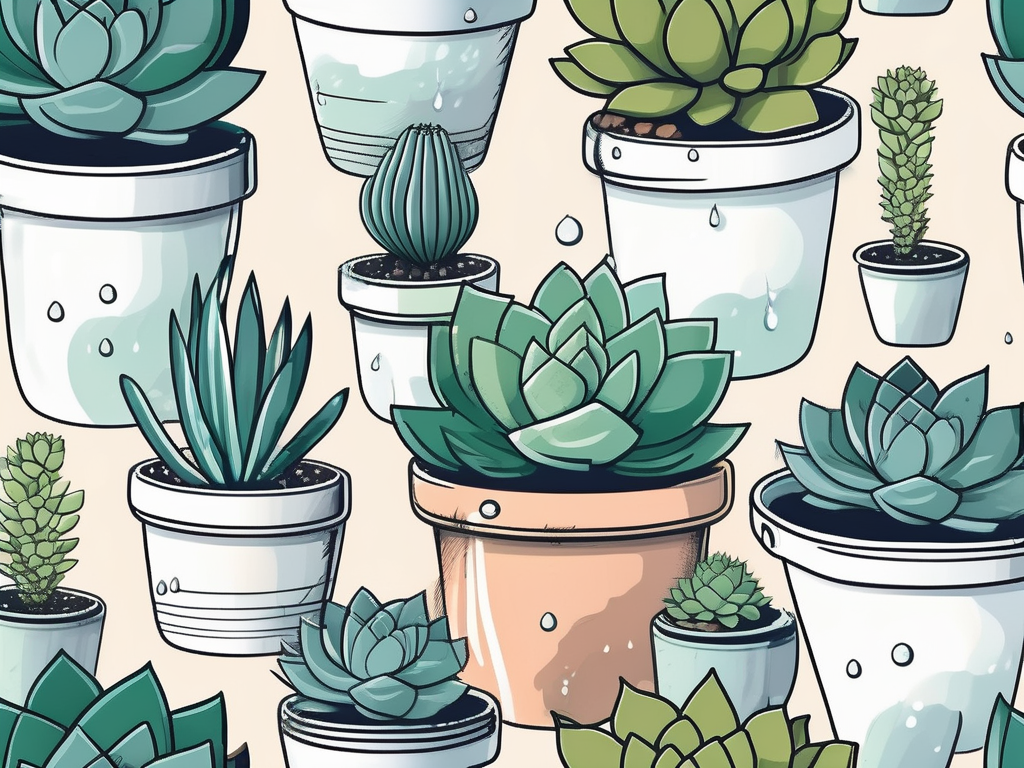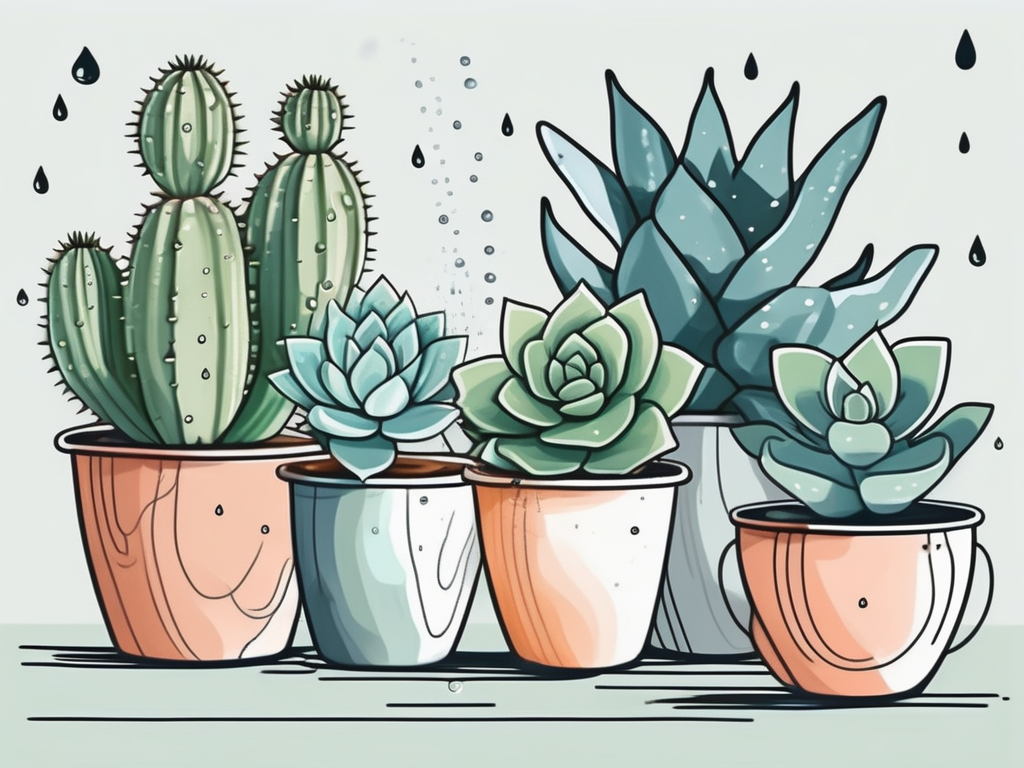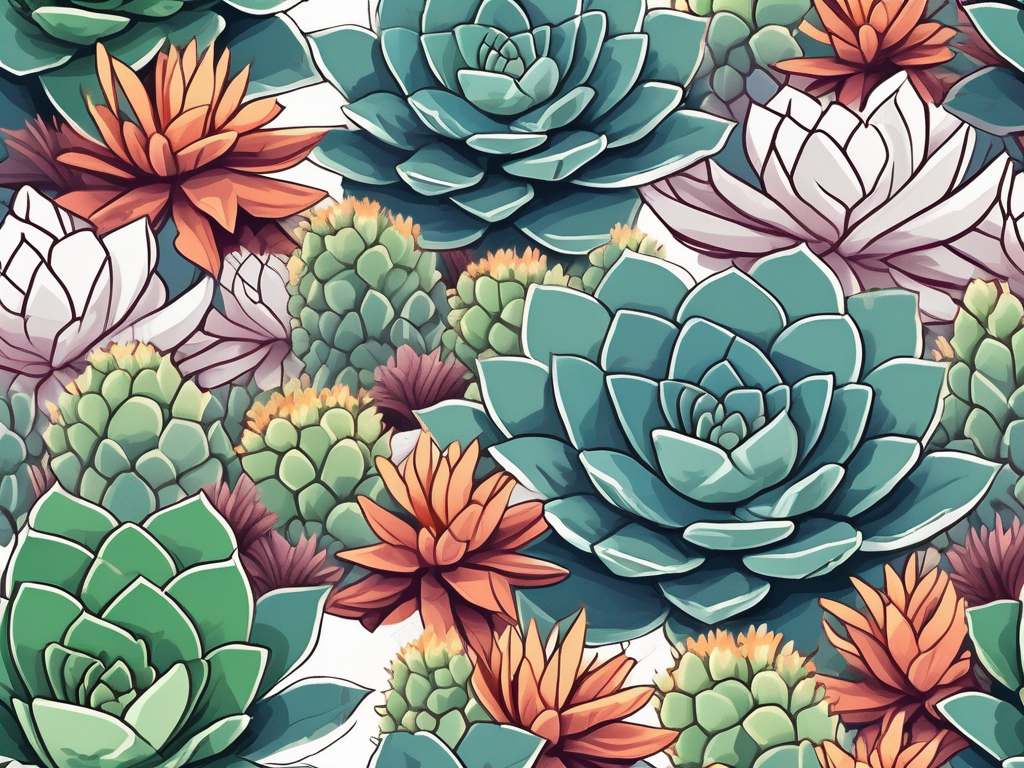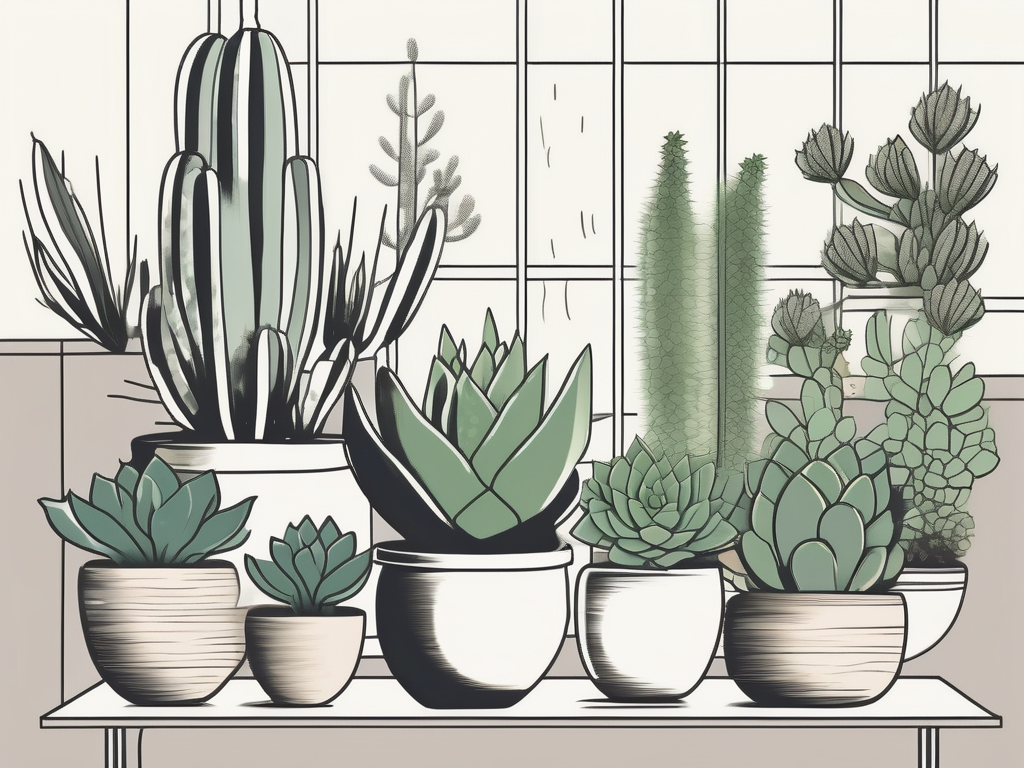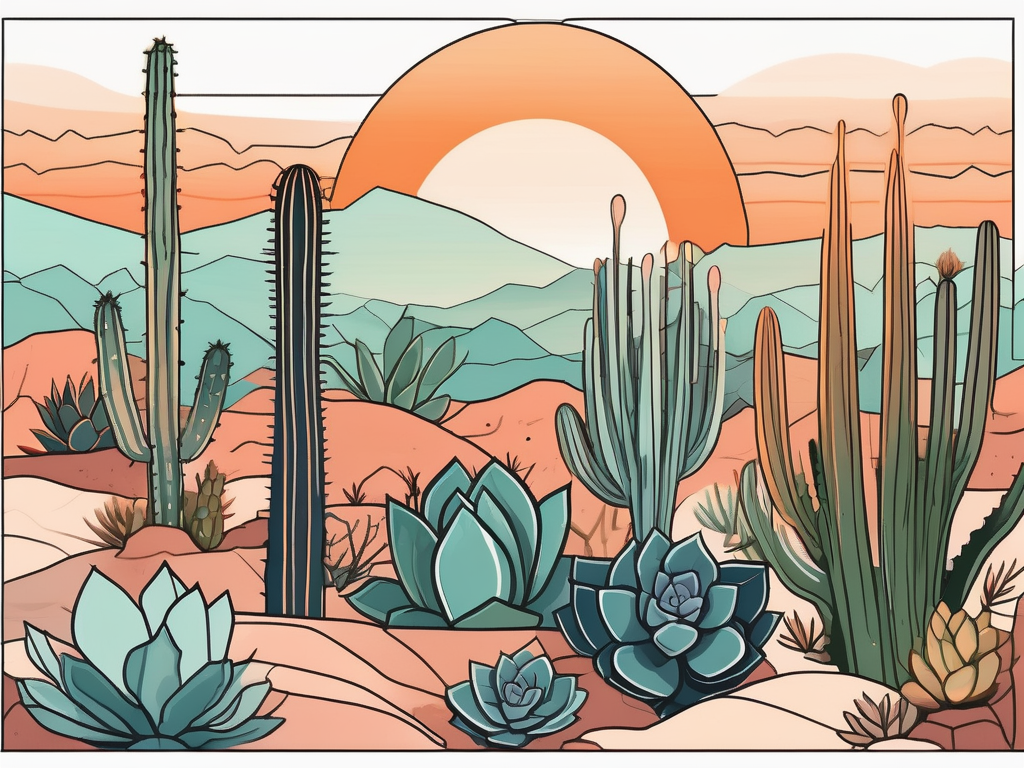
Succulents have a magical quality that draws people in with their diverse shapes, colors, and hardy nature. They’re not just popular indoor plants but also fascinating subjects in their natural habitats. If you’ve ever wondered where these captivating plants come from and how they thrive in the wild, you’re in the right place.
We're going to take a closer look at succulents in their natural environments, uncovering the secrets of their survival and beauty. From deserts to high-altitude mountains, each section will help you appreciate these amazing plants even more, whether you're a seasoned plant lover or a curious beginner.
What Makes Succulents So Special?
Succulents have an extraordinary ability to store water in their leaves, stems, or roots. This adaptation allows them to thrive in harsh, dry environments where other plants might struggle to survive. But what exactly gives them this unique edge?
First, let's talk about their leaves. Succulent leaves are often thick and fleshy, with a waxy or powdery surface that helps reduce water loss. This is a handy feature when you're living in a place where rain is a rare treat. Some succulents, like the well-known Aloe Vera, have gel-like substances inside their leaves that not only store water but also have medicinal properties.
Their roots are another wonder. Succulents tend to have shallow but wide root systems. This design allows them to quickly absorb moisture from even the lightest rain. It's like having a natural sponge ready to soak up every last drop. And don't get me started on the variety! From the towering Saguaro cactus to the tiny Lithops (often called living stones), succulents come in all shapes and sizes, each adapted to its unique environment.
Desert Dwellers: The Classic Succulent Habitat
When you think of succulents, deserts probably come to mind first. And for a good reason! Deserts provide the perfect backdrop for succulents to shine. But surviving in a desert is no small feat. These plants have evolved incredible ways to make the most of their arid surroundings.
Take the cactus family, for example. These spiky characters are perhaps the most iconic desert succulents. They have evolved to maximize water retention and minimize loss. That’s why their leaves are reduced to spines, which not only reduce water loss but also provide shade and protection from herbivores.
- Cacti: Known for their spines and ability to store water in their stems.
- Agaves: With rosette shapes and sharp leaf tips, they’re built for desert life.
- Yucca: Often found in deserts, these plants have sword-like leaves and tall flower spikes.
Interestingly enough, desert succulents have a unique way of photosynthesis called CAM (Crassulacean Acid Metabolism). This allows them to open their stomata at night to reduce water loss. It's a clever way to cope with the extreme heat and dryness of their environment.
Mountains and High Altitudes: A Different Kind of Struggle
Not all succulents bask under the scorching desert sun. Some brave the chilly heights of mountains. High-altitude succulents face a different set of challenges, including cold temperatures and intense sunlight. Yet, they’ve adapted beautifully.
The Sempervivum, or houseleek, is a great example. This hardy plant forms tight rosettes that hug the ground, reducing exposure to cold winds. Its leaves are often covered with tiny hairs or a waxy coating to protect against the cold.
Another mountain-dweller is the Sedum. These plants are often found on rocky slopes, where they cling to crevices and absorb moisture from the air. Their ability to survive in poor soil conditions and withstand frost makes them quite the survivors.
- Sempervivum: Known for their ability to withstand cold and thrive in rocky terrains.
- Sedum: Versatile plants that can handle poor soils and cold temperatures.
High-altitude succulents often have a slower growth rate, which is a smart way to conserve energy and resources in such a challenging environment. It might take time, but the result is a resilient plant capable of withstanding the harshest conditions.
Rainforests and Moist Climates: Yes, They’re Here Too!
You might be surprised to find succulents in rainforests, but they're there, adapting to the humid and shaded conditions. These succulents have evolved to take advantage of the moisture and filtered sunlight found in these lush environments.
One of the most notable rainforest succulents is the Epiphyllum, or orchid cactus. As epiphytes, these plants grow on trees, absorbing moisture and nutrients from the air and rain. They have long, trailing stems and often produce stunning, fragrant flowers.
Then there’s the Rhipsalis, another epiphytic cactus that thrives in the rainforest. With its slender, cylindrical stems, it hangs gracefully from tree branches, soaking up the humidity.
- Epiphyllum: Known for their beautiful flowers and epiphytic lifestyle.
- Rhipsalis: The only cactus naturally found outside the Americas, thriving in rainforest conditions.
These rainforest succulents have adapted to a life with less direct sunlight, relying instead on the dappled light that filters through the forest canopy. Their ability to store water is still essential, helping them weather dry spells even in these wetter environments.
Coastal and Island Habitats: Succulents by the Sea
Imagine succulents growing along sandy shores and rocky coastlines. These plants have adapted to salty air, strong winds, and sandy soils. Coastal succulents are a testament to nature's ability to thrive in diverse conditions.
The Carpobrotus, often called the ice plant, is a succulent that commonly grows in coastal areas. With its sprawling growth habit, it stabilizes sandy soils and prevents erosion. Plus, its bright pink or yellow flowers add a splash of color to the landscape.
Another coastal succulent is the Aloe dichotoma, or quiver tree. This striking plant is native to southern Africa and is known for its tall, branching structure and resilience to harsh coastal winds.
- Carpobrotus: Known for their ability to stabilize sandy soils and produce vibrant flowers.
- Aloe dichotoma: A resilient tree-like succulent adapted to coastal winds and salty air.
Coastal succulents often have thick, waxy leaves that protect them from salt spray and help reduce water loss. Their ability to thrive in sandy, well-draining soils makes them perfect for seaside gardens and landscapes.
Succulent Survival Strategies: How They Beat the Odds
Succulents have developed an impressive arsenal of strategies to survive in extreme environments. These adaptations enable them to flourish where other plants might wither. Let's take a closer look at some of their clever tricks.
One of the most intriguing survival strategies is their ability to go dormant. During periods of drought or extreme heat, many succulents will slow down their growth and conserve energy. This dormancy allows them to survive until conditions improve.
Succulents also have a knack for propagating themselves. Many can reproduce through offsets or "pups," small clones that grow from the base of the parent plant. This method ensures that even if the main plant suffers, its offspring have a chance to thrive.
- Dormancy: Slowing down growth to conserve resources during harsh conditions.
- Propagation: Producing offsets or pups to ensure survival and growth.
Another fascinating strategy is their ability to change color. Some succulents will develop reddish or purple hues when stressed, which can help protect them from sunburn or signal a need to conserve resources. This color change can also be quite beautiful, adding to their charm.
Human Interaction: Cultivating Wild Succulents
While succulents are mesmerizing in their natural habitats, many of us enjoy bringing a piece of that magic into our homes. Cultivating wild succulents as houseplants has become increasingly popular, and it's not hard to see why.
These hardy plants are relatively easy to care for, making them ideal for busy plant people or those new to gardening. Their diverse shapes and sizes allow for creative indoor displays, from tiny terrariums to grand arrangements.
When growing wild succulents at home, it's important to mimic their natural conditions as much as possible. This means providing well-draining soil, plenty of sunlight, and careful watering. Overwatering is a common mistake, as most succulents prefer to dry out between waterings.
- Well-draining soil: Essential for preventing root rot and mimicking natural conditions.
- Sunlight: Most succulents thrive in bright, indirect light or direct sunlight.
- Watering: Allow soil to dry out completely between waterings to avoid overwatering.
Interestingly, many succulents can also be grown from cuttings, making it easy to expand your collection or share with friends. Simply cut a healthy leaf or stem, let it callous over, and place it in soil. Before you know it, you'll have a new plant to enjoy.
Succulents as Cultural Icons: More Than Just Plants
Succulents aren't just admired for their beauty and resilience; they also hold cultural significance in many parts of the world. From ancient traditions to modern design, these plants have found their way into various aspects of human life.
In some indigenous cultures, succulents like the Agave have been used for centuries for food, drink, and medicine. The Agave plant, for example, is the source of tequila and has long been a staple in Mexican culture.
In modern times, succulents have become popular in design and decor. Their striking forms and low-maintenance nature make them perfect for minimalistic and contemporary spaces. They’re often used in weddings, art installations, and even fashion.
- Agave: Used for food, drink, and medicine in traditional cultures.
- Design and decor: Popular in contemporary and minimalistic spaces.
Succulents also symbolize resilience and adaptability, qualities that resonate with many people. Their ability to thrive in challenging conditions serves as a reminder of nature's ingenuity and the beauty of overcoming adversity.
Creating Your Own Succulent Landscape
Feeling inspired by the wild succulents? You can create your own succulent landscape at home, whether you have a sprawling garden or just a sunny windowsill. With a bit of creativity and planning, you can design a space that reflects the diverse beauty of succulents in the wild.
Start by choosing a variety of succulents that suit your space and climate. Consider mixing different shapes, sizes, and colors to create visual interest. You can also incorporate rocks, gravel, or driftwood to mimic their natural habitats.
When planting succulents outdoors, make sure the soil drains well. You can enhance drainage by mixing sand or perlite into the soil. If you're planting in containers, select pots with drainage holes to prevent waterlogging.
- Variety: Choose a mix of shapes, sizes, and colors for visual interest.
- Drainage: Ensure soil drains well to prevent root rot.
- Containers: Use pots with drainage holes for container gardening.
Remember to place your succulents where they'll receive plenty of sunlight. Most succulents prefer bright, indirect light, but some can tolerate full sun. With a little care and attention, you'll soon have a thriving succulent landscape that brings a touch of the wild into your home.
Final Thoughts
Succulents are truly remarkable plants, each with a story to tell about adaptation and survival. Whether growing in deserts, mountains, or rainforests, these plants have captivated our hearts with their beauty and resilience. By understanding their natural habitats, we can better appreciate the uniqueness of each succulent species.
At Cafe Planta, we’re passionate about helping you care for your plants and create beautiful, thriving collections in your home. Whether you’re a seasoned plant parent or just starting out, we’re here for you. If you have any questions or need guidance, feel free to email us or reach out on Instagram. Let's nurture our love for plants together!














